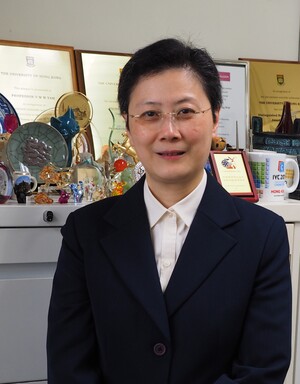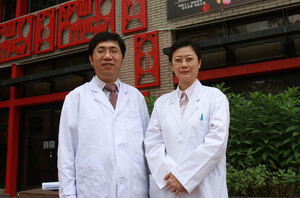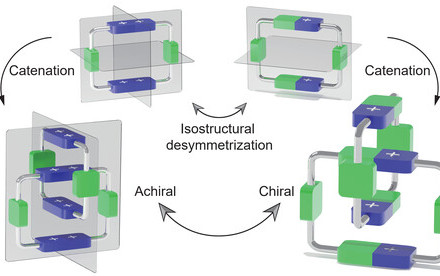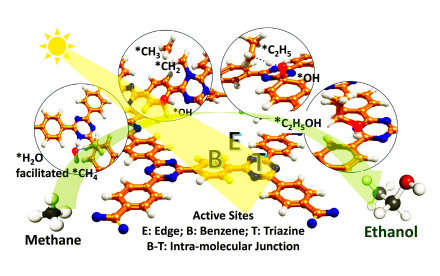27 May 2021
Translational Research Series: OLED - Organic light-emitting diode

Phosphorescent OLED materials developed by Professor YAM and her team.

Professor Vivian Wing Wah YAM
Philip Wong Wilson Wong Professor in Chemistry and Energy
Chair Professor of Department of Chemistry
said Professor Vivian Wing Wah YAM.
Research Division for Chemistry
 | Researchers: Professor Chi Ming CHE(On the left) Zhou Guangzhao Professor in Natural Sciences and Chair Professor Professor Vivian Wing Wah YAM Philip Wong Wilson Wong Professor in Chemistry and Energy and Chair Professor |
The Research Division for Chemistry has a strong tradition of transition metal complex chemistry and has pioneered various classes of highly efficient metal complex emitters. The Division’s strengths also include inorganic excited states and their photophysics and photochemistry. These areas bring seminal and sustained contributions to the development of robust and highly emissive organic light-emitting diode (OLED) materials.
OLEDs are amongst one of the most promising energy-efficient display technologies that can be found everywhere, including smartphones, 8K televisions, head-worn displays like augmented reality (AR) and virtual reality (VR) equipment. OLEDs work by passing electricity through incredibly thin layers of organic semiconductors. Excited states formed in these organic materials will radiatively decay to their initial, stable “non-excited” state, i.e. the ground state, and release energy in the form of light.
Contribution to highly emissive OLED display
Professor Chi Ming CHE is a world-recognised expert in phosphorescent metal complexes and the use of long-lived excited states for photocatalysis. His pioneering “one-chelating-ligand+one metal” design strategy has successfully generated various classes of high-performance platinum(II) emitters for OLEDs.
Professor Vivian YAM is a world-recognised expert in molecular design and spectroscopic studies of luminescent metal-based molecular functional materials, particularly in the manipulation and harnessing of excited states for light-enabled technologies and functions. She has pioneered new classes of luminescent metal complexes, especially gold(III) complexes that are photo-stable and capable of displaying unprecedented room-temperature phosphorescence properties. Her seminal work on organogold(III) phosphors in 1993 has paved the way for the first gold-based OLED in 2005. Subsequent works feature various classes of gold(III) emitters with bidentate, tridentate, and tetradentate ligands with unprecedented high performance and high operational stabilities, together with the generation of Hong Kong-owned intellectual property rights.
Forming partnerships with industries
|  |
|
These innovative works have attracted considerable industrial interests to collaborate with Professor Yam’s team at HKU and to sponsor her work to realise their commercial use in display technology. She has long-term collaboration and strategic partnerships with industries, especially the collaboration with TCL Corporation Ltd., one of China’s largest enterprise groups in consumer electronics on the global scale, and its subsidiaries to develop new printable OLED materials and technology. There is an increasing number of display producers joining the OLED market, with market revenue projected to reach more than USD69 billion by 2027.
“The development of our own proprietary luminescent materials that are nationally and Hong Kong-owned is really timely,” said Professor Yam. Currently, most of the commercially available phosphors are based on iridium(III) complexes, where foreign companies hold most of the key patents. Our luminescent gold(III) complexes with high originality hold great promises to overcome these business monopolies. Taking advantages of the rich gold reserve in China, being the second largest in the world, the development of luminescent gold(III) complexes can exploit China’s natural resources and competitive edge to develop cheaper and high-performance metal phosphors with Hong Kong-owned intellectual property rights.
Working closely with the industry can definitely facilitate more collaborations and motivate more downstream translational activities. This will provide new avenues for the display and solid-state lighting companies in Hong Kong and the Mainland to obtain a fair share of the OLED market. “Our research works in the past are mostly curiosity-driven, but now we are going to do more application-inspired basic research as well as translational research, and hopefully, to enhance Hong Kong’s translational competency and to produce a great impact on the society,” said Professor Yam.
Click here to learn more about the research projects of Professor Chi Ming CHE.
Clickhere to learn more about the research projects of Professor Vivian YAM.









